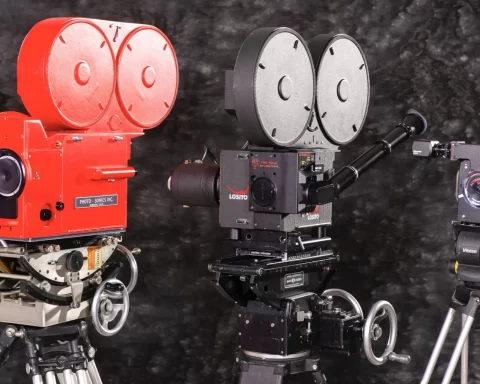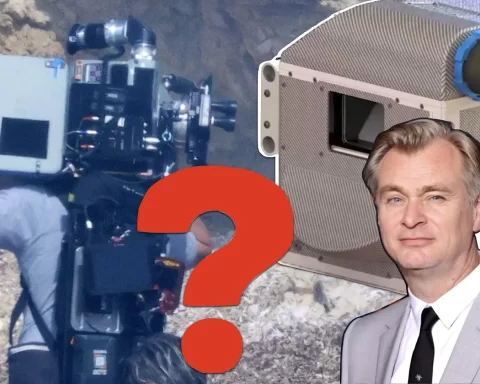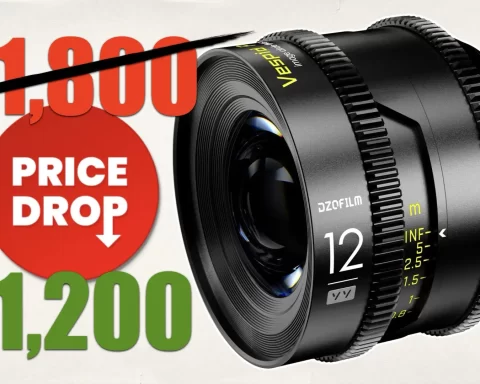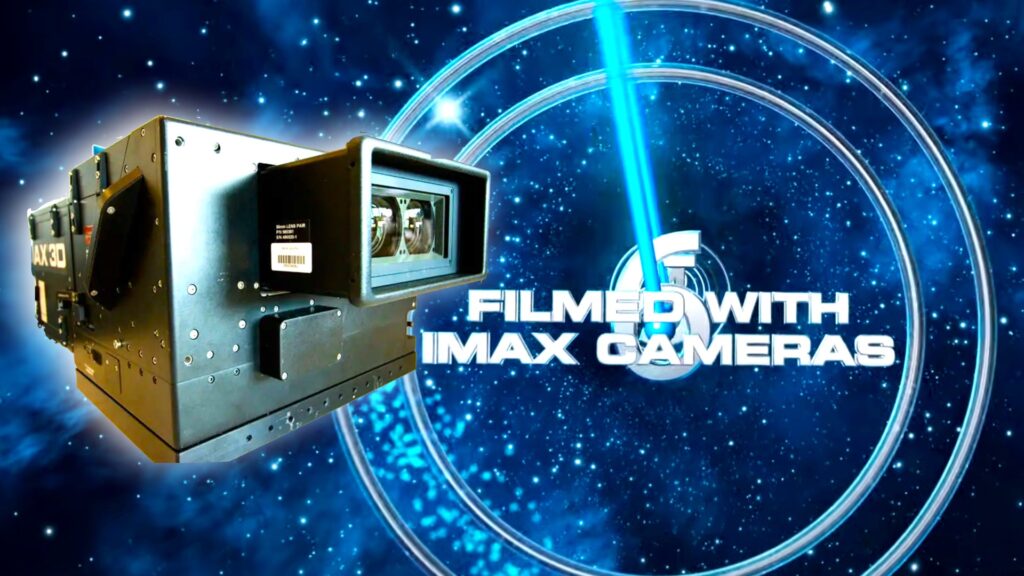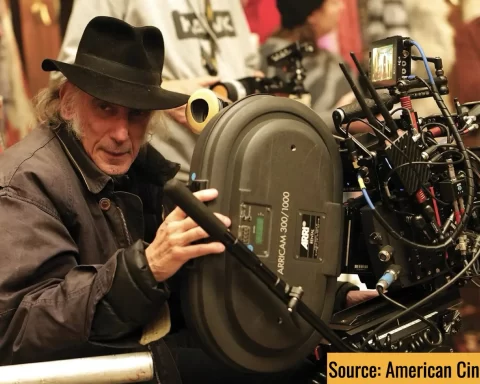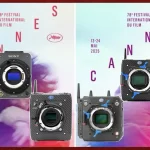It appears that Oppenheimer was shot on specially modified fast Panavision Sphero and System 65 lenses. Even more interestingly, a dedicated snorkel lens was made for the IMAX cameras, to capture extreme macro shots of some ultra-intriguing scientific stuff.

Shot on large format glass
Now everybody knows that Christopher Nolan’s Oppenheimer was shot with unconventional methods by Director of Photography Hoyte van Hoytema. The IMAX film cameras were used to capture objects with minimal (to zero – as stated by Nolan) CGI and VFX layers. Indeed, as mentioned by Hoytema before the release of the movie, there was a particular emphasis on capturing actors’ faces, amplified by IMAX MKIV, and IMAX MSM 9802 cameras, bringing this mighty 18K resolution of enhanced motions and dramaturgy.

Out-of-the-box cinematography
Hoytema, which Oppenheimer is his fourth collaboration with Nolan (Interstellar, Dunkirk, and Tenet) likes to try new techniques, especially when shooting on large format cameras. For instance, he did “very extreme and crazy things with IMAX cameras” in Nope. Hence, Oppenheimer was no different in that aspect. In a recent interview with Kodak, Hoytema elaborated for the first time about some new and exciting technical stuff they have implemented in Oppenheimer. “As with our previous films, I also knew early on that he wanted to shoot as much as possible in camera, utilizing practical effects and miniatures, as much as possible, keeping CGI, bluescreen, and VFX to an absolute minimum,” he said to Kodak and adds: “As we all dug deeper into researching the period and the events, I was particularly interested to learn more about Oppenheimer and the scientists themselves and to investigate things like the side development of extremely high-speed, ultra-light-sensitive and split- field cameras, plus very long lenses, that were specially-made to record the Trinity explosion. In this respect, Peter Kuran’s book How to Photograph an Atomic Bomb proved quite astonishing”. When filming the real Trinity test back in 1945, the photographers utilized a camera called the Rapatronic camera, which is a high-speed camera capable of recording a still image with an exposure time as brief as 10 nanoseconds. However, now we have the Vision Research Phantom cameras which are very capable of shooting an atomic explosion. Nevertheless, these cameras were not used on Oppenheimer.
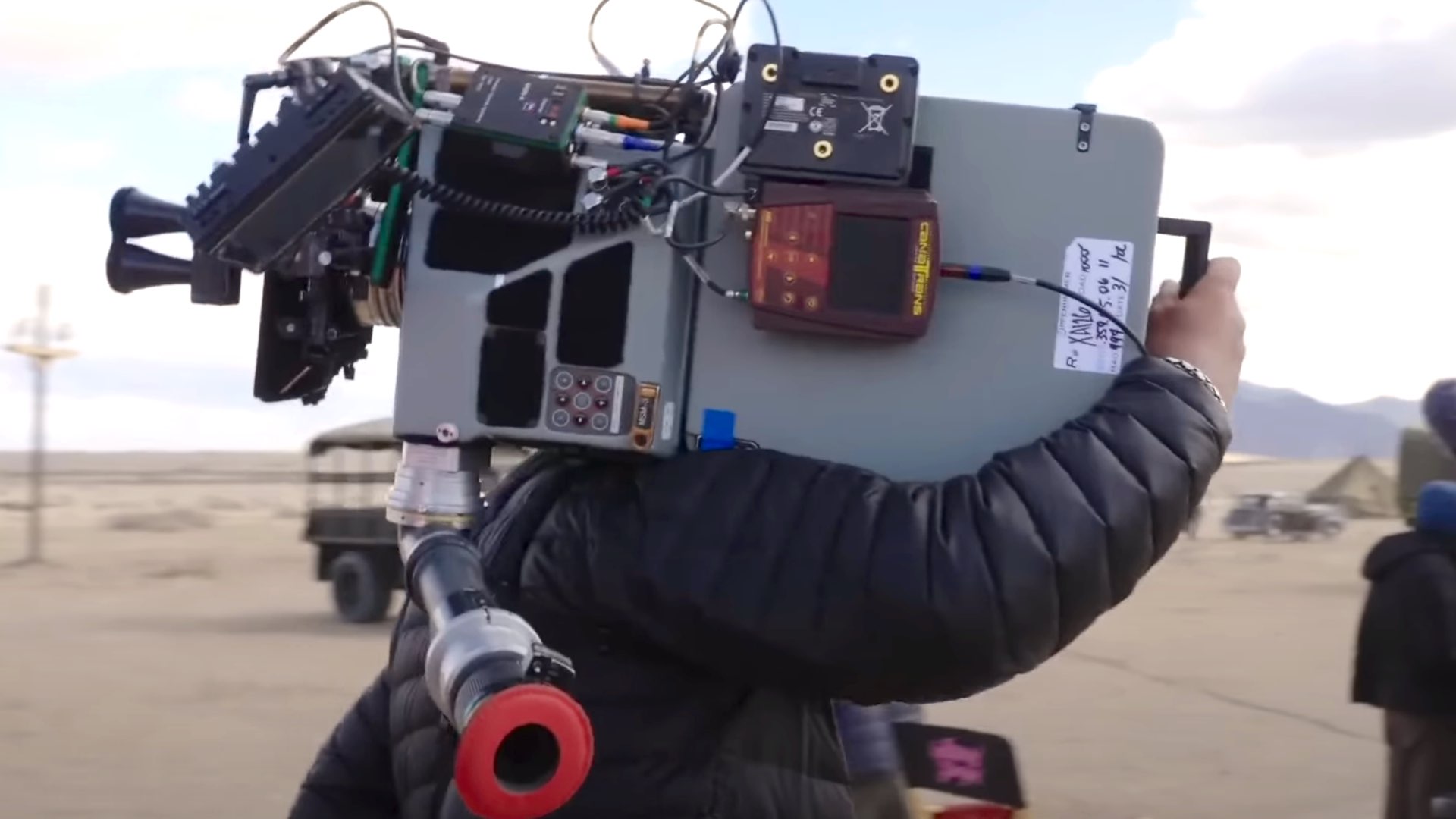
Using only 50mm and 80mm lenses
Hoytema said that to shoot Oppenheimer on IMAX cameras, two focal lengths were used: 50mm and 80mm: “Through the years we have discovered that the sweet spots with IMAX are 50mm and 80mm. Anything beyond those focal lengths and you start to diminish the immersive quality of the image. If you go too long the image appears compressed and more graphic, as if you’re looking at a flat screen. Anything too wide becomes more like a fishbowl, where the edges start to fall off too fast. So, the 50mm has become our wide lens, and the 80mm is our tighter lens. On close-ups, they give you the right proximity and wideness, and everything around starts to function like the peripheral vision of your eyes” he said. Indeed, these two focal lengths are considered ideal to film faces. However, imagine the pain of the focus puller as he/she tried to pull focus in that super large format, paired with these focal lengths, and in an open aperture. That explains the claim of many out-of-focus shots by moviegoers who watched the film.

A dedicated glass was invented
Hoytema continues to elaborate on the modified lenses they used for this unconventional capturing: ”But when shooting our close-ups, we didn’t want the camera to be six feet away from our subject. We wanted to be much tighter so that you really feel the perspective and the intimacy. Also, I knew we would be filming in low-light situations and would need to shoot at T1.4 rather than a T4”. The lenses they used are Panavision Sphero 65 and Panavision System 65 lenses. They are fast, but not fast enough to shoot Oppenheimer. Thus, Hoytema approached Panavision’s Dan Sasaki, in order to modify the lenses, as explained by Hoytema: “Dan is an amazing lens artist, a magician, who met what I thought were impossible demands, as he tweaked existing lenses or re-engineered others from the ground up”.
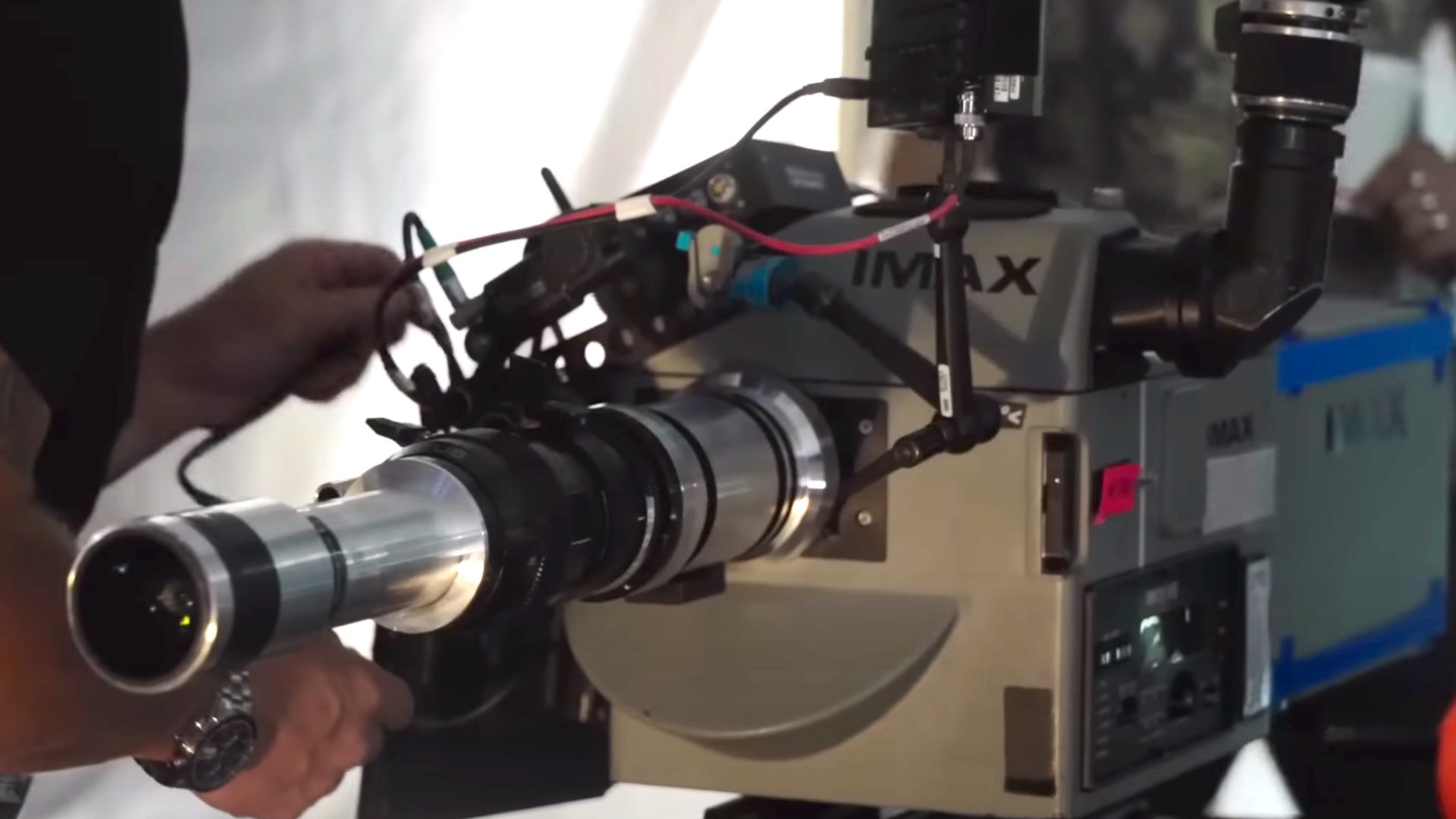
For the first time: An IMAX snorkel lens
When watching the BTS, many noticed a strange lens attached to the IMAX MSM9802 camera. For the first time, a snorkel lens was built to be paired with the IMAX to shoot the science of the atomic bomb. As Hoytema elaborated: ”He even built a special, waterproof snorkel lens for use with the IMAX cameras that didn’t exist before, so that we could get extreme macro shots on the miniatures and interesting views for some of the more imaginative scientific scenes in the film. It is basically a very long, thin tube with a lens in the outer end. It’s like a micro-lens that has a much bigger depth of field. It’s a two-foot-long, gigantic thing, and we could poke it into an aquarium underwater; we could put it into tanks. As opposed to standing a little bit away. With a longer form of lens, you could really be in between things”.
Oppenheimer is supposed to be screened in IMAX for three weeks. That means you have about 16 days left. You can watch it on a real IMAX 70mm theater, or in other theaters and screening options as well (read the Oppenheimer Large Format guide here).





